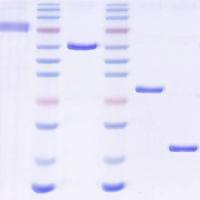Animal Models in Drug Development for MRSA
互联网
582
One of the foremost challenges of drug discovery in any therapeutic area is that of solidifying the correlation between in vitro activity and clinical efficacy. Between these is the confirmation that affecting a particular target in vivo will lead to a therapeutic benefit. In antibacterial drug discovery, there is a key advantage from the start, since the targets are bacteria—therefore, it is simple to ascertain in vitro whether a drug has the desired effect, i.e., bacterial cell inhibition or killing, and to understand the mechanism by which that occurs. The downstream criteria, whether a compound reaches the infection site and achieves appropriately high levels to affect bacterial viability, can be evaluated in animal models of infection. In this way animal models of infection can be a highly valuable and predictive bridge between in vitro drug discovery and early clinical evaluation.
The Gram-positive pathogen Staphylococcus aureus causes a wide variety of infections in humans (Archer, Clin Infect Dis 26:1179–1181, 1998) and has been said to be able to infect every tissue type. Fortunately, over the years a great deal of effort has been expended toward developing infection models in rodents using this organism, with good success. This chapter will describe the advantages, methods, and outcome measurements of the rodent models most used in drug discovery for S. aureus . Mouse models will be the focus of this chapter, as they are the most economical and thus most commonly used, but a rat infection model is included as well.








